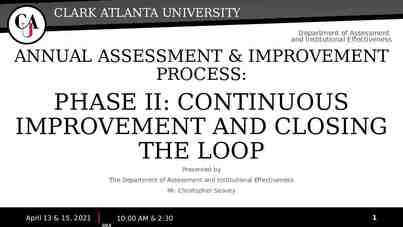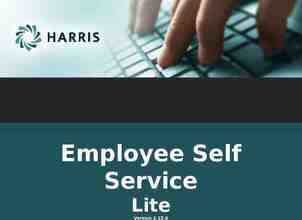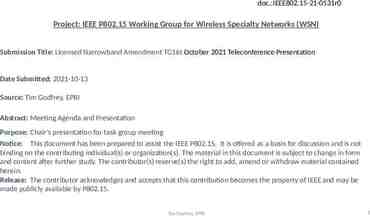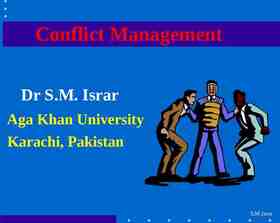Exchange 2007 Overview Eileen Brown blogs.technet/eileen brown
56 Slides6.48 MB

Exchange 2007 Overview Eileen Brown http://blogs.technet.com/eileen brown

What Will We Cover? New features in Microsoft Exchange 2007 The Exchange Management Console The Exchange Management Shell New features in Outlook Web Access Transport rules

Why Change Anything? Administration –Inconsistent management levels, operation practices, permissions Topology –Different topologies, settings, elements and boundaries Server –Complicated and monolithic server used in different ways Mailbox, Public Folder, Antivirus, Hub Transport, Mail Delivery, Client Access Different needs and different Service Level Agreements –Difficult to support larger mailboxes Service –Complex interaction between services Routing, client / server interaction, Exchange/Active Directory interaction –Difficult to implement new end-user functionalities

Today’s Business Environment What customers tell us IT Decision Makers Employees E-mail is mission critical to our business Securing the enterprise is a top concern Compliance is difficult to enforce We need easy access to our communications We need to be able to work from anywhere Built-in Protection Anywhere Access E-mail is our primary collaboration tool Infrastructure is increasingly expensive IT Professionals We are looking for ways to reduce complexity Management tasks are tedious, not automated Operational Efficiency

Simplify Deployment and Management Server role-based deployment Exchange Management Console Exchange Management Shell Native 64-bit Local and clustered continuous replication AutoDiscover

Exchange 2007 Enterprise Topology Enterprise network Other SMTP Servers I N T E R N E T Edge Transport Routin g Hygien e Hub Transport Routing OWA, Outlook Anywhere Voice Messaging Protocols: Programmability: Policy Unified Messaging Applications: EAS, POP, IMAP, Outlook Anywhere PBX or VoIP Mailbox Web services, Web parts Mailbo x Client Access Public Folders Fax

Role Based Server Configurations Five server roles Server roles chosen at install Smart default settings for each server role Automated Server install (Exchange Management Shell)

Improved Exchange Management Console Side by Side Comparison Exchange Server 2003 Exchange Server 2007

Improved Exchange Management Console Basics 1. Console Tree: segmented into four work centers 2 Organization Server Recipients Toolbox 2. Result Pane: rich list of objects 4 1 3 3. Work Pane: child objects of result pane object, only used by Servers and System nodes 4. Action Pane: tasks for selected object(s) and node (work center)

Demo demonstration Understanding the Exchange Management Console Navigate the Exchange Management Console Use the Exchange Management Console to Change User Properties

Operational Efficiency Greater Administrative productivity Exchange Management Console Exchange Management Shell Improved, more intuitive management GUI Powerful command line shell supports automation and batching

Bye Bye GUI, welcome back CLI! Many Exchange admins like the GUI –But still appreciate how good CLI automation will be E.g. Reduce mundane ops like building out a new server Downsides to “PowerShell”. –Relatively steep learning curve (compared to GUI) –Some things (e.g. Public Folder management) are only possible with command line (for now, at least) Role-based deployment a good thing too –Though it might mean a bit more hardware.

New Exchange Management Shell Built upon new command line PowerShell technology from Windows Enables the same operations that are in Exchange Server 2007 EMC GUI at the Command Line Supports automation and bulk operations Enables IT Pros to write secure automation scripts that run locally or remotely Enables developers to add command-line management capabilities using .NET PowerShell SDK available for Exchange Server 2007

New Exchange Management Shell Command Line Structure Argument Noun Verb Name Msh Get-mailbox String –Server Command “smbex01” Parameter Property Names Name ---- Alias ----- John Kelly Beth Aker Server ------ johnk betha StorageQuota ----------- smbex01 smbex01 Property Values unlimited unlimited

New Exchange Management Shell Command Line Structure Get-excommand out-file c:\excommand.txt Verbs Sample Nouns Update Mailboxdatabase New Storagegroup Get Sendconnector Remove Umautoattendant Set Transportagent Add Mobiledevice Enable Systemhealth Mount Servicehealth Dismount Journalrule Disable MAPIconnectivity Test Distributiongroup

New Exchange Management Shell Comparison – Exchange Server 2003 vs. Exchange Server 2007 Exchange 2003 (VBScript) Exchange Server 2007 (“One-Liner”) Set listExchange Mailboxs GetObject("winmgmts:{impersonationLevel impersonate}!\\ COMPUTERNAME\ROOT\MicrosoftExchangeV2").InstancesOf("Exchange Mailbox") get-mailboxstatistics For Each objExchange Mailbox in listExchange Mailboxs WScript.echo "AssocContentCount ” objExchange Mailbox.AssocContentCount WScript.echo " DateDiscoveredAbsentInDS ” objExchange Mailbox.DateDiscoveredAbsentInDS WScript.echo " DeletedMessageSizeExtended ” objExchange Mailbox. DeletedMessageSizeExtended WScript.echo " LastLoggedOnUserAccount ” objExchange Mailbox. LastLoggedOnUserAccount WScript.echo " LastLogoffTime ” objExchange Mailbox. LastLogoffTime WScript.echo " LastLogonTime ” objExchange Mailbox. LastLogonTime WScript.echo " LegacyDN ” objExchange Mailbox. LegacyDN WScript.echo " MailboxDisplayName ” objExchange Mailbox. MailboxDisplayName WScript.echo " MailboxGUID ” objExchange Mailbox. MailboxGUID WScript.echo " ServerName ” objExchange Mailbox. ServerName WScript.echo " Size ” objExchange Mailbox. Size WScript.echo " StorageGroupName WScript.echo " StorageLimitInfo WScript.echo " StoreName WScript.echo " TotalItems Next ” objExchange Mailbox. StorageGroupName ” objExchange Mailbox. StorageLimitInfo ” objExchange Mailbox. StoreName ” objExchange Mailbox. TotalItems –server servername

Demo demonstration Using the Exchange Management Shell

Large, Low-Cost Mailboxes with 64-Bit 32-bit Exchange Reduce I/O per sec required by 70 percent A quarter of the disk Four times more users Larger inboxes 64-bit Exchange 2007

High Availability at Lower Cost Log shipping Reduce the need to restore Reduce impact of backup operations Dumpster interval increased Local Continuous Replication Clustered Continuous Replication ve i t Ac ive s s a P

AutoDiscover Active Directory Client Access Server

AutoDiscover Active Directory Client Access Server

AutoDiscover Active Directory Client Access Server

Information Worker Inbox Productivity Microsoft Office Outlook Web access improvements Calendaring improvements Document access Unified messaging

Anywhere Access Unified messaging solution Single inbox for e-mail, voicemail, and fax Voice access from regular phone Speech-enabled auto attendant “7 out of 10 phone calls go direct to voicemail“ - Gartner (“The Knowledge Worker Investment Paradox”, 2002)

Miscellaneous Features Autocomplete Fast search Conversation view Notifications

Address Book

Address Book

Calendaring Improvements

Document Access Microsoft Outlook Web Access (OWA) and Exchange ActiveSync proxies Microsoft SharePoint Services and Microsoft Windows Server file share data Enable access to documents through OWA without directly exposing the stores on the Internet

Document Access Continued

Demo demonstration Using Exchange Outlook Web Access Utilize the Outlook Web Access Interface Improvements Search Messages Understand Messaging Handling Improvements

Unified Messaging Automated Attendant Call answering Fax receiving Outlook Voice Access

Vision & Benefits Problems being Addressed with Exchange 2007 Voice and e-mail exist as separate inboxes hosted on separate servers accessed through the desktop for e-mail and the phone for voicemail Fax messages come to stand-alone fax machines and require personnel to monitor Users and administrators have to manage their communications from multiple locations with multiple sets of tools 04/07/2024 Page 33

Vision & Benefits Exchange Server 2007: The Integrated Communications Backbone Exchange Vision –Provide e-mail and scheduling services that make Outlook users most productive, delivering the freedom and flexibility to securely work when and how they choose, at a lower cost to the organisation than ever before. Extend the Exchange Server 2007 vision by bringing new and valuable content into the inbox (voicemail/fax) Simplify life and reduce costs for the administrator by consolidating infrastructure and training Increase the client reach of Exchange to the telephone to truly allow “anywhere access” to your inbox 04/07/2024 Page 34

UM Configuration Easily Configured via EMC Create a Dial Plan object Create an IP Gateway object and associate it with Dial Plan object –Create Hunt Group object –Associate it with IP Gateway object Associate UM Server object with Dial Plan object Enable UM on the UM Server –Discovers all VoIP gateways associated with Dial Plan Create a Mailbox Policy object –Associate it with the Dial Plan Enable Users –Associate with a Mailbox Policy Exchang e Management Console Exchange Wizard izard Title Create UM IP Gateway Completion Wizard izard Title File Actions View X This wizard helps you create an UM IP gateway for use by Exchange Unified Messaging. A UM IP gateway object represents the connection between a physical gateway or IP PBX and Exchange Unified Messaging. Help Unified Messaging Actions Create Filter Role Status Dial Plans View Server01 Unified Messaging Disabled Dial Plan 1, Dial Plan 2 New Window from Here Resource Mailbox Server02 Unified Messaging Enabled Dial Plan 2 Shared Mailbox Mailbox Help Client Access Bridgehead Unified Messaging Server01 Public Folder Enable UM Server Organization Configuration Toolbox Properties Help EnterProperties Text UM Server Note that this UM IP gateway will not be functional until at least one hunt group has been created within the UM IP gateway. General UM Server Configuration Associated UM IP gateway: IP Gateway 1 Unified Messaging: Server 01 Hunt group name: Hunt Group 1 Associated Dial Plans Dial plan: Add. Browse. The pilot identifier is the string received with new calls and is used to associate the call with a dial plan. Pilot identifier: Help Tradition al PBX Help Back Wizard izard Title Create VoIP Gateway Back Create Remove Associated Dial Plan Dial Plan 1 Dial Plan 2 Cancel Miscellaneous Configuration Prompt languages: Completion Create Dial Plan Maximum concurrent calls: Maximum concurrent fax calls: Help File This wizard helps you create a dial plan for use by Exchange Unified Messaging. A dial plan is a grouping of unique telephone extension numbers. The voice message originator is the account from which messages arrive. Actions View Favorites Window Console Tree X Exchange System Manager Dial Plan 1 100 100 OK Help Unified Messaging Cancel Actions Create Filter Unified Messaging Display Name Role Status Dial Plans View Server01 Unified Messaging Disabled Dial Plan 1, Dial Plan 2 New Window from Here Resource Mailbox Server02 Unified Messaging Enabled Dial Plan 2 Shared Mailbox Mailbox Help Client Access 4 Bridgehead Unified Messaging Voice message originator e-mail address: Server01 Public Folder Browse. Back Enable UM Server Organization Configuration Send a non-delivery report if message delivery fails Help Refresh Export List Server Configuration Number of digits in extension: Apply User Mailbox Recipient Configuration Dial plan name: Unified Messagin g Server US English Cancel Exchang e Management Console Exchange Create Dial Plan Hub Transpor t Server Refresh Export List Server Configuration 192.168.100.121 This wizard helps you create a hunt group for use by Exchange Unified Messaging. A hunt group object represents a connection between a UM IP gateway and a dial plan, by associating a pilot identifier with a particular dial plan. Create Internal phone Cancel X Unified Messaging Display Name User Mailbox Recipient Configuration IP Gateway 1 Completion Window Exchange System Manager Create UM IP Gateway IP address for the gateway: Create Hunt Group Favorites Console Tree UM IP gateway name: Create Hunt Group Mailbo x Server Toolbox Properties Help Active Director y X

How Unified Messaging Works Unified Messaging Call Answering Without a VoIP Gateway Step 3 Step 2 Step 1 Step 4 Step 5

Message Hygiene Antivirus protection Antispam protection

Exchange Anti-Spam Connection filtering Real Time Block Lists Global accept / deny and exception lists SMTP Filtering Layer Incoming Internet E-mail Sender and Recipient Filtering Sender ID Connection Filtering SMTP Command Tar-pitting SMTP Filtering Content Filtering Content Filtering Outlook Safe List Aggregation Anti-Spam/Anti-Phishing SCL Per-user/OU Spam preferences Outlook Mailbox International Domain Support Inbox Junk E-mail Quarantine and Spam Reporting 04/07/2024 Page 38

Anti-Spam SCL Threshold Improvements Set Actions based on the SCL level assigned to a message Thresholds can be set on a per-recipient basis

Exchange Hosted Services EHS Security Messaging Security Features Spam and virus filtering “in the cloud” blocks unwanted content before it reaches corporate networks Edge blocking prevents nefarious connections Fast updates to spam rules, virus definitions Offsite quarantine for suspected spam Policy-based encryption

Antivirus Overview Edge Transport server role: Filters inbound/outbound traffic Hub Transport server role: Filters e-mail between mailboxes, even if they reside on the same server Mailbox server role: Legacy support: virus scanning on mailbox “Poison” messages are not poisonous New Exchange Server 2007 capabilities: –Managed MIME parsing and composing –Content-Transfer encoding (Base64, QP, Uuencode, BinHex) –Managed TNEF and RTF parsing and composing –Managed iCalendar/vCard parsing and composing 04/07/2024 Page 41

Protect Messages in Transit Intra-organisation messages Inter-organisation messages Policy-based routing Server roles Filtering

Enable Messaging Policy for Compliance Agents E-mail life cycle Multi-mailbox search

Demo demonstration Securing the Organisation Configure a Transport Rule

Exchange Server Hosted Services Exchange Hosted Filtering Exchange Hosted Archive Exchange Hosted Encryption Exchange Hosted Continuity

New for Exchange 2007: Web Services Unified store access with Web services Outlook interoperability provided via Exchange Business Logic layer No client-side runtime necessary Strongly typed objects for messages, calendar items, contacts and more Great Visual Studio .NET integration

Savings Potential Assessing the Impact of Exchange Server 2007 Current Activity or Cost Voicemail, corp. operator/directory Resources Required Savings How Impact Mobile messaging Backup & restore Compliance Storage hardware Client/server setup Administration Server hardware Unified Messaging and auto attendant with AD integration Integrated; no additional servers or services Reduced time to backup/restore; storage flexibility Journaling per user, archiving; retention integration with Outlook IO optimisation; Direct attach storage support for HA Outlook/mobile device setup; reduced help desk calls Scripting and command line interface 64-bit enabled server consolidation

Session Summary New features in Microsoft Exchange 2007 The Exchange Management Console The Exchange Management Shell New features in Outlook Web Access Transport rules

For More Information Visit TechNet at www.microsoft.com/technet Visit the following site for additional information www.microsoft.com/technet/EXC-100

Non-Microsoft Publications This book can be found at all major bookstores and online retailers

Training Resources Course ID 3910 3911 Title Getting Started with Microsoft Exchange Server 2007 Clinic Getting Started with Microsoft Exchange Server 2007 HOL For training information and availability: www.microsoft.com/learning

Readiness with Skills Assessment Self-study learning tool free to anyone Determines skills gaps Provides learning plans Post your score; see how you stack up Visit www.microsoft.com/assessment

Become a Microsoft Certified Professional What are MCP certifications? Validation in performing critical IT functions Why certify? Wide recognition of skills gained through experience More effective deployments with reduced costs What certifications are there for IT pros? MCP, MCSE, MCSA, MCDST, MCDBA www.microsoft.com/learning/mcp

Heard the News About TechNet? Software without time limits Complimentary technical support The most current resources on hand www.microsoft.com/technet/subscriptions

Find all these support options at www.microsoft.com/technet/support Microsoft offers a progressive series of support options starting with no-charge online support and developing through subscription, incident, and contract support. 1. No-Charge Online Support 2. Subscription-Based Support 3. Assisted Incident Support 4. Contract-Based Support Knowledge Base TechNet Subscription E-mail Support Premier Support Search a vast database of articles to pinpoint the information you need. Subscribe to TechNet for a personal library of articles, service packs, how-to’s, resource kits, tools, utilities, and more. Your subscription includes monthly updates delivered on CD or DVD, so you always have the latest information, straight from the source. Get online incident help via e-mail from a Microsoft Support Professional. Upgrade to a TechNet Plus subscription and add all this: Save with a discounted 5-Pack Phone Support contract. Advisory Services Search here to identify the software used to install a specific DLL version. 1. Full-version evaluation software, including Microsoft Office System and Windows Server System products, without time restrictions. Get the flexibility to match support options to your organization and enjoy direct access to Microsoft technical experts at any time, day or night. Premier Support delivers customized options for businesses with complex needs, including dedicated technical professionals to oversee your support, 24x7 problem resolution, and training and workshops that keep your IT sta up to date. Events and Errors Message Center 2. Free support — two complimentary incidents, plus a discount on other support calls. Newsgroups Access over 20,000 active newsgroups on scores of topics. Product Support Centers Get answers to frequently asked questions, plus how-to articles and stepby-step instructions organized by product. DLL Help Database Resolve event and error messages fast with explanations, recommendations, and links to support and resources. Support Webcasts Tune in to live technical presentations by Microsoft experts and take part in realtime Q&A. Chats Chat online with Microsoft specialists or search the transcript archives. User Group Program Access information and support for IT and other interest-specific user groups. TechNet Security Resource Center Get ahead of security risks with resources that keep you current, including security newsletters and the Microsoft notification service. 3. Unlimited, next-business-day access to reliable answers from the IT community and Microsoft Support Professionals through Managed Newsgroups (English only). Phone Support Get incident help over the phone from a Microsoft Support Professional. Phone Support Contract Add remotely delivered consultation options from Microsoft Advisory Services for proactive support that goes far beyond routine product maintenance. Essential Support Essential Support offers prepackaged option specifically designed to meet the fundamental support requirements of any business, large or small. Includes account management, problem resolution, and information services.

Where Else Can I Get Help? Free chats and webcasts List of newsgroups Microsoft community sites Community events and columns www.microsoft.com/technet/community






